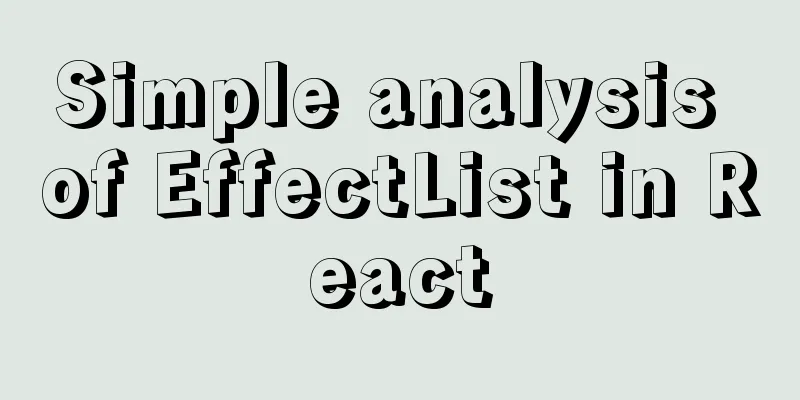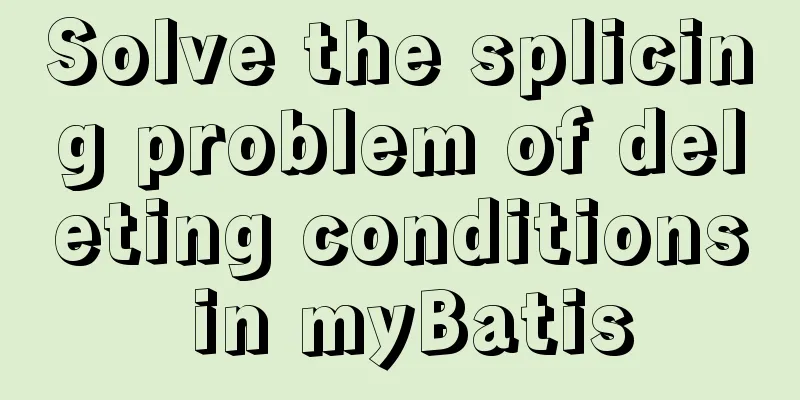Simple analysis of EffectList in React

|
In React, EffectList is traversed to perform node operations, lifecycle methods, and Effect methods. EffectList can be compared to the colorful lights hanging on a Christmas tree, and this Christmas tree is the Fiber tree. Why does EffectList exist? For example, there are some Fiber nodes in a Fiber tree that need to execute the EffectList solves this problem. During the construction of the Fiber tree, whenever the EffectList Collection EffectList is a one-way linked list. The construction of the Fiber tree is depth-first, that is, the child Fiber nodes are built downwards first, and after the child nodes are built, the parent Fiber nodes are built upwards, so the child Fiber nodes are always in front in the EffectList. The operation of completing the construction of the Fiber node is executed in the The simplified code is as follows.
function completeUnitOfWork(unitOfWork: Fiber): void {
let completedWork = unitOfWork;
do {
const current = completedWork.alternate;
const returnFiber = completedWork.return;
let next = completeWork(current, completedWork, subtreeRenderLanes);
// effect list construction if (
returnFiber !== null &&
(returnFiber.flags & Incomplete) === NoFlags
) {
// Copy layer by layer if (returnFiber.firstEffect === null) {
returnFiber.firstEffect = completedWork.firstEffect;
}
if (completedWork.lastEffect !== null) {
// This means that the current node is a sibling node, the child node has an effect, and returnFiber.lastEffect has been assigned a value if (returnFiber.lastEffect !== null) {
// Effect of connecting sibling nodes
returnFiber.lastEffect.nextEffect = completedWork.firstEffect;
}
returnFiber.lastEffect = completedWork.lastEffect;
}
const flags = completedWork.flags;
// This fiber node has an effect
if (flags > PerformedWork) {
// The current node has an effect connected to the effect list
if (returnFiber.lastEffect !== null) {
returnFiber.lastEffect.nextEffect = completedWork;
} else {
// The case where returnFiber does not have firstEffect is the first time it encounters a node with effect returnFiber.firstEffect = completedWork;
}
returnFiber.lastEffect = completedWork;
}
}
// Traverse the sibling elements and return to the parent const siblingFiber = completedWork.sibling;
if (siblingFiber !== null) {
workInProgress = siblingFiber;
return;
}
completedWork = returnFiber;
workInProgress = completedWork;
} while (completedWork !== null);
}
EffectList actually works like a bubble, collecting data layer by layer to the upper layer, starting from the first node with As in the following structure, if each <div id="1"> <div id="4"/> <div id="2"> <div id="3"/> </div> </div> The final EffectList is firstEffect => div4 lastEffect => div1 Because the Fiber tree is constructed depth-first, all EffectList traversal starts from firstEffect => div4 div4.nextEffect => div3 div3.nextEffect => div2 div2.nextEffect => div1 EffectList at the first render In React, there is a performance optimization for the first Mount, in which the Fiber node's EffectList does not include
let firstEffect;
// Connect the root node finishedWork as well if (finishedWork.flags > PerformedWork) {
if (finishedWork.lastEffect !== null) {
finishedWork.lastEffect.nextEffect = finishedWork;
firstEffect = finishedWork.firstEffect;
} else {
firstEffect = finishedWork;
}
} else {
// The root node has no effect.
firstEffect = finishedWork.firstEffect;
}
Traversal of EffectListEffectList is mainly used for the execution of Layout phase life cycle methods and DOM operations.
// Process getSnapshotBeforeUpdate and schedule useEffect
nextEffect = firstEffect;
do {
commitBeforeMutationEffects();
} while (nextEffect !== null);
//DOM operation nextEffect = firstEffect;
do {
commitMutationEffects(root, renderPriorityLevel);
} while (nextEffect !== null);
// Execution of life cycle methods nextEffect = firstEffect;
do {
commitLayoutEffects(root, lanes);
} while (nextEffect !== null);
In these three methods in the Layout stage, Summarize EffectList is not a global variable. During the creation of the Fiber tree, Fiber nodes with Since the collection process is depth-first, the children will be collected first, so the children will be operated first during traversal. Therefore, if an interviewer asks which of the child and parent life cycles or The above is a brief analysis of the details of EffectList in React. For more information about EffectList in React, please pay attention to other related articles on 123WORDPRESS.COM! You may also be interested in:
|
<<: How to use multi-core CPU to speed up your Linux commands (GNU Parallel)
>>: Django+mysql configuration and simple operation database example code
Recommend
MySQL 5.7.23 decompression version installation tutorial with pictures and text
Download the MySQL installer Official download ad...
Example of using the href attribute and onclick event of a tag
The a tag is mainly used to implement page jump, ...
Summary of common knowledge points required for MySQL
Table of contents Primary key constraint Unique p...
MySQL full-text index to achieve a simple version of the search engine example code
Preface Only Innodb and MyISAM storage engines ca...
Methods and steps for deploying go projects based on Docker images
Dependence on knowledge Go cross-compilation basi...
Learn one minute a day to use Git server to view debug branches and fix them
Debug branch During the normal development of a p...
Summary of MySQL ALTER command knowledge points
When we need to change the table name or modify t...
Solution to the problem that VC6.0 cannot be used when installed on WIN10
VC6.0 is indeed too old VC6.0 is a development to...
js uses FileReader to read local files or blobs
Table of contents FileReader reads local files or...
How to implement concurrency control in JavaScript
Table of contents 1. Introduction to Concurrency ...
Detailed explanation of Nginx proxy_redirect usage
Today, I encountered a little problem when I was ...
MySQL slow query log configuration and usage tutorial
Preface MySQL slow query log is a function that w...
Use Javascript to develop sliding-nav navigation plug-in with sliding bar effect
Table of contents 1. Introduction 2. Usage 3. Dev...
Detailed example of how to implement transaction commit and rollback in mysql
Recently, we need to perform a scheduled migratio...
A brief discussion of the interesting box model of CSS3 box-sizing property
Everyone must know the composition of the box mod...









